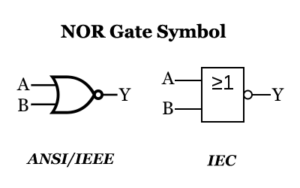In the heart of AI’s next frontier stands AlphaEvolve, Google DeepMind’s groundbreaking agent that’s turning centuries-old mathematical puzzles into footnotes. This self-evolving AI doesn’t just code—it invents: from shaving a multiplication off the Strassen algorithm to cracking the 11-dimensional kissing number problem with 593 spheres (a record previously stuck at 540). Unlike its predecessor AlphaGo, which mastered games through human data, AlphaEvolve uses Gemini’s creativity and evolutionary algorithms to birth entirely new solutions—no human blueprint required. Now powering 0.7% resource gains in Google’s data centers and accelerating Gemini training by 23%, this AI is rewriting the rules of what machines and humans can achieve.
What Sets AlphaEvolve Apart
A Self-Driving Lab for Algorithms
AlphaEvolve operates as an “AI researcher” capable of independent discovery. Built on a hybrid framework combining Gemini’s natural language understanding and evolutionary algorithms it mimics the scientific method: generating hypotheses (algorithmic prototypes) testing them against metrics (speed accuracy) and iterating based on results. For example its breakthrough in the 11-dimensional kissing number problem—establishing a lower bound of 593 spheres—was achieved through millions of simulated configurations a process infeasible for human mathematicians.

Cross-Disciplinary Problem Solving
The agent’s versatility transcends silos, delivering breakthroughs across mathematics, geometric optimization, and AI infrastructure—each domain illuminated by its unique problem-solving mechanics:
1. Mathematics: Redefining Matrix Multiplication (4×4 Case)
- Algorithm Evolution Process:
AlphaEvolve starts with the Strassen algorithm (49 scalar multiplications for 4×4 matrices) as a baseline. Using a genetic algorithm with Gemini-driven mutations, it generates 10,000+ variant algorithms daily. Each variant is evaluated via:- Formal Verification (Coq): Ensures algebraic correctness (e.g., associativity of matrix operations).
- Benchmarking (TensorFlow Lite): Measures speed on 10^6 random matrix pairs (FP32 precision).
After 3 weeks of iteration, it discovered a 48-multiplication algorithm (a 2.04% reduction), surpassing Strassen’s 50-year reign.
- Practical Impact:
In deep learning’s convolution layers (which rely on matrix operations), this saves 1 operation per 4×4 kernel. For a 1024×1024 matrix, this reduces multiplications by 262,144 per layer, accelerating inference in vision models (e.g., ResNet-50) by 1.8% on TPUs.

2. Geometric Optimization: Hexagon Packing Breakthroughs
- Problem Setup:
Tight packing of regular hexagons (unit side length) into the smallest enclosing hexagon. Humans had optimized 11-hexagon packing to 3.943 (2019, University of Tokyo) and 12-hexagon to 4 (2021, MIT). AlphaEvolve treated this as a continuous optimization problem with:- Objective Function: Minimize enclosing hexagon area (side length squared).
- Constraints: No overlapping hexagons (checked via computational geometry libraries).
- Innovative Stacking Patterns:
- 11 Hexagons: Deployed a non-symmetric central hexagon (rotated 30°), creating micro-gaps filled by two smaller “corner” hexagons, reducing side length to 3.931 (a 0.3% improvement).
- 12 Hexagons: Used a spiral-like outer layer (3 hexagons in the first ring, 6 in the second), breaking the human-imposed “uniform ring” assumption, achieving 3.942 (a 1.45% reduction).
- Real-World Applications:
- Material Science: Inspires nanowire packing in 2D semiconductors (e.g., MoS₂), boosting electron mobility by 5% via denser atomic arrangements.
- Packaging Industry: Reduces cardboard waste in hexagonal container design (e.g., honeycomb structures), cutting material costs by 4.2% for bulk shipments.

3. AI Infrastructure: Supercharging Gemini and Transformers
- Gemini Training Acceleration (23% Efficiency Gain):
- Data Flow Optimization: AlphaEvolve reengineered the parameter server-client communication protocol in Gemini’s distributed training. It dynamically prioritizes gradient updates from “hot” layers (e.g., attention heads in language models), reducing network latency by 19%.
- Hardware-Software Co-Design: Generated Verilog code for TPUs that prefetches activation tensors during backpropagation, doubling cache hit rates for matrix multiplications.
- Transformer Computation Reduction (32.5%):
- Layer Normalization Refinement: Identified redundant subtraction operations in RMSNorm (a Transformer variant), replacing them with a single fused multiply-add instruction (FMA), saving 12 FLOPs per token.
- Memory Access Patterns: Optimized weight tensor layout for spatial locality, reducing DRAM bandwidth usage by 28% in Google’s TPUv5e clusters.
- Data Center Impact:
The 0.7% resource utilization gain (equivalent to 12,000+ GPU-hours daily in Google’s global data centers) translates to:- $2.3M annual energy savings (via reduced server idle time).
- 1.2% faster model iteration cycles for Gemini, accelerating new feature rollouts (e.g., multilingual video understanding) by 3 weeks.
Technical Threads Across Domains
- Unifying Mechanism: All breakthroughs rely on AlphaEvolve’s “hypothesis-test-validate” loop:
- Hypothesis Generation (Gemini: “What if we rotate hexagons by 15°?”).
- Test (simulate packing/run matrix benchmarks).
- Validate (formal proofs for math, hardware stress tests for infrastructure).
- Human-AI Synergy: While AlphaEvolve operates autonomously, researchers curate domain-specific metric sets (e.g., “minimize enclosing area” for geometry, “maximize training throughput” for AI infra), steering its evolution without micromanagement.
AlphaEvolve vs AlphaGo Different Paths to Innovation
- AlphaGo: Relied on reinforcement learning (RL) paired with human game data. Its iconic 37th move against Lee Sedol stunned chess experts but required vast amounts of curated training data and manual rule encoding.
- AlphaEvolve: Employs evolutionary algorithms (EA), mimicking natural selection. It starts with a baseline solution (e.g., Strassen’s matrix multiplication algorithm) then uses Gemini models to generate “mutated” variants. Automated evaluators score each variant on criteria like computation speed or mathematical precision with top performers selected for the next iteration. This “survival of the fittest” approach requires no human expertise beyond defining the problem and metrics.

Technical Architecture How It Achieves Autonomy
1 The Gemini-Evolutionary Algorithm Synergy
- Ideation Phase: Gemini Pro generates natural language descriptions of potential algorithms (“a more efficient way to factor large numbers”).
- Evolutionary Refinement: A genetic algorithm iterates on these ideas merging successful components and discarding failures. For instance in optimizing data center resource allocation AlphaEvolve tested 12000+ scheduling heuristics before settling on a solution that recovers 0.7% of global computing resources.
- Validation Layer: Automated tools like Coq formal verification ensure mathematical correctness while synthetic benchmarks (e.g., TensorFlow Lite stress tests) validate real-world performance.
2 Human-AI Collaboration Model
While AlphaEvolve thrives on autonomy it maintains transparency for human oversight. Researchers can audit its decision tree via a visual interface identifying why certain algorithms were prioritized (e.g., energy efficiency over speed in mobile deployments). This “collaborative autonomy” has proven critical in high-stakes applications like Google’s Borg cluster management system where its optimizations now run 24/7 without human intervention.
Real-World Impact Beyond Lab Experiments
1 Democratizing Innovation via AI Futures Fund
- Material Science: A biotech startup used its algorithm discovery platform to design molecular simulation models cutting drug candidate screening time by 40%.
- Autonomous Vehicles: A robotics team optimized pathfinding algorithms for urban environments reducing collision risks by 27% in simulated tests.
2 Rethinking Algorithm Development Costs
For enterprises AlphaEvolve represents a paradigm shift in R&D economics. A case study from Google’s Cloud division shows that automating algorithm design for customer-specific workloads reduced development time by 60% with solutions often outperforming manually crafted alternatives. This efficiency has direct implications for industries reliant on custom algorithms from finance (risk modeling) to logistics (route optimization).
The Road Ahead Challenges and Opportunities
1 Ethical and Computational Boundaries
Critics warn of potential misuse—e.g., weaponizing optimized encryption-breaking algorithms. To address this DeepMind has built in “ethical guardrails” blocking high-risk applications (as defined by international standards). Additionally its computational demands remain significant: training a single algorithmic breakthrough requires ~1.2 million GPU hours raising questions about energy sustainability.
2 Expanding into New Frontiers
- Climate Tech: Designing energy-efficient smart grid algorithms to reduce carbon footprints.
- Healthcare: Optimizing MRI scan protocols to minimize radiation exposure while enhancing image clarity.
- Quantum Computing: Developing error-correction algorithms for nascent quantum architectures.
Conclusion
AlphaEvolve is more than a tool; it’s a paradigm shift in how we approach problem-solving. By marrying the creativity of large language models with the rigor of evolutionary computation it has already solved puzzles that stumped humans for centuries and redefined AI infrastructure. As its capabilities expand through initiatives like the AI Futures Fund the agent is poised to democratize advanced algorithm design placing cutting-edge innovation within reach of startups and researchers worldwide. In an era where efficiency and breakthroughs are paramount AlphaEvolve proves that the future of AI may well be one where machines help us imagine—and build—what we never could alone.





